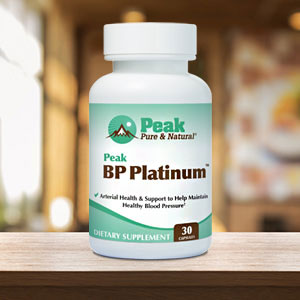Get Easy Health Digest™ in your inbox and don’t miss a thing when you subscribe today. Plus, get the free bonus report, Mother Nature’s Tips, Tricks and Remedies for Cholesterol, Blood Pressure & Blood Sugar as my way of saying welcome to the community!
Recipe for recovery: The science in chicken soup

You know those books called “Chicken Soup for the Soul”? Seems like pretty much every group has their own “Chicken Soup” book.
Growing up Jewish, this comes as no surprise to me. Chicken soup was the standard remedy for colds and flu, before medicine, before a visit to the doctor.
Well, I’ve found out a few things since then.
First, Jewish mothers aren’t the only ones pushing chicken soup. It’s used as a remedy in many cultures around the world, each with its own variation.
And second, there are real, medicinal qualities that make chicken soup more than just, well, chicken soup.
Sweet, sour, bitter, salty and…
There’s a fifth category of taste called umami, often described as a “meaty” taste.
But not all umami foods are meat or poultry. Cheese, mushrooms, miso and soy sauce have it, too.
And it’s the umami taste in chicken soup that starts the healing process.
When you have a cold, your appetite often decreases, and you don’t get enough nutrition to help your body heal.
Studies show that the umami taste in chicken soup may help to spur a better appetite—and you know what they say about feeding a cold.
Chicken soup promotes nutrient absorption
Umami also seems to prepare our bodies to receive nutrients that are especially important when our bodies are healing.
Once the brain senses umami through our taste buds, our digestive tract becomes primed to absorb proteins more easily.
Not only does this help with healing, but it may also relieve gastrointestinal symptoms that can go with the flu, including nausea, vomiting, and diarrhea.
Chicken soup reduces inflammation and congestion
Inflammation is part of our body’s natural response to injury or illness. Inflammation occurs when white blood cells migrate to inflamed tissue to help with healing.
In the case of upper respiratory illnesses, it’s our nose, throat and upper airway that need healing, and so white blood cells migrate there, causing the dreaded stuffy nose, thickened mucus and coughing.
If you can reduce white blood cell count in the nasal passages, you reduce inflammation.
And guess what does that?
Research shows that chicken soup can inhibit the ability of neutrophils, a type of white blood cell, to travel to the inflamed tissues, thus reducing the white blood cell count and reducing inflammation. This can help relieve a stuffy nose — and that’s a big deal, now that we know some of the popular OTC decongestants just don’t work.
Also, the steam from hot chicken soup can increase blood flow to the nasal passages, which also helps with inflammation. One study showed that chicken soup does this more effectively than the steam from a hot bath or shower.
And soup also prevents dehydration, which could cause mucus to harden, making it difficult to expel.
A recipe for recovery
It is important to clarify that we’re talking about homemade soup here, not the ultra-processed chicken soup that you get from a can.
Not only do the canned versions contain few hearty vegetables, but they’re also devoid of the antioxidants, vitamins and minerals you’ll get plenty of when you make homemade chicken broth/soup including:
- Essential fatty acids – help with rebuilding membranes like those in the nose and throat.
- Protein – repair tissue and fight infection.
- Iron – your body uses it to make hemoglobin, which carries oxygen from the lungs to the rest of your body.
- Selenium – an essential component of proteins that protect against cell damage and infection.
Be sure your soup is chock-full of vegetables like carrots, celery, and onions. They all have vitamin C, which we know helps to cure colds by acting as an antioxidant that neutralizes free radicals.
Be generous with the chicken. It’s a great source of vitamins B3 and B6 and tryptophan, an essential amino acid that helps the body produce its “feel good hormone,” serotonin.
And for the extra energy your body needs during recovery from illness, add noodles — an easily digestible carbohydrate.
Lastly, maximize the healing potential of chicken soup by inhaling the vapors as they rise from your steamy bowl or mug. This increases the temperature of nasal and respiratory passages, which loosens mucus and helps you breathe easier quickly. Add a little spice and garlic and this will work even better!
To get you started, here are two easy and wholesome recipes that contain a lot of the ingredients we’ve talked about here:
Slow cooker chicken soup with white beans and spinach
Editor’s note: Did you know that when you take your body from acid to alkaline you can boost your energy, lose weight, soothe digestion, avoid illness and achieve wellness? Click here to discover The Alkaline Secret to Ultimate Vitality and revive your life today!
Sources:
Chicken Soup Has Been a Remedy For Thousands of Years… But Why? — Science Alert
The Nutrients Behind Chicken Soup — Mom’s Meals
Sharing umami with the world — Umami Information Center
Umami flavor enhances appetite but also increases satiety — The American Journal of Clinical Nutrition
Chicken Soup Inhibits Neutrophil Chemotaxis In Vitro — CHEST Journal















